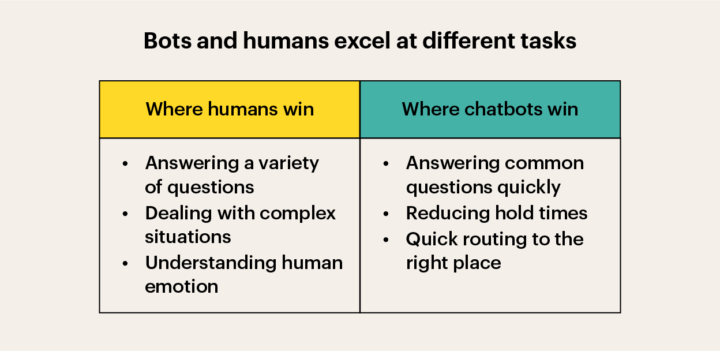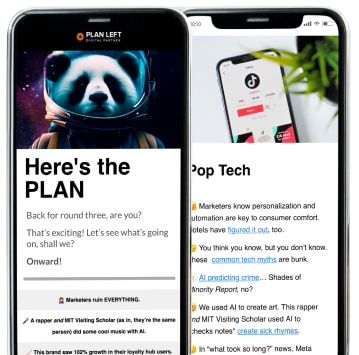
Chatbots are revolutionizing customer service by providing efficient, 24/7 support. These AI-powered conversational agents are designed to interact with humans, offering instant assistance and transforming the way businesses engage with their customers.
The Rise of Chatbots in Customer Service
The adoption of chatbots has seen a significant surge, particularly in the retail space. This trend has been accelerated by recent global events, with businesses recognizing the value of automated support systems. Chatbots have proven their worth in maintaining customer engagement, with 58% of users returning to use them for subsequent interactions.
Do You Need An AI Chatbot?
Chatbots leverage existing knowledge bases and FAQs to provide instant, accurate answers to customer inquiries. They can understand and respond to various versions of the same question and be customized to match your brand’s voice and tone.
When to Consider Having a Chatbot Online
Automated chatbots are a powerful tool for improving customer service efficiency and availability. But when should you implement one to help streamline processes?
- You have an international website with multiple languages
- Multi-channel customer support is needed (e.g., App, Website, Social)
- 24/7 human support is time and cost-intensive
- You want to scale up your customer support

Source: Intercom
Benefits of Having a Chatbot
Chatbots have changed how businesses provide customer service, offering numerous advantages:
- Boost customer satisfaction with automated support
- Continuous learning through machine learning
- Enhanced user experience by efficiently handling customer queries
- Cost-effectiveness compared to human agents
- 24/7 availability and quick response times
Types of Chatbots
There are two main types of chatbots:
- Rule-based chatbots: These follow predefined scripts and decision trees. They’re great for handling straightforward queries but can struggle with more complex interactions.
- Examples:
- Cinema ticket booking chatbot – Provides branching questions to help users select day, time, movie, and payment mode.
- Restaurant table booking chatbot.
- FAQ chatbots used by airlines and hotels that present a list of pre-set options or questions
- Examples:
- AI-powered chatbots: These leverage machine learning and natural language processing (NLP) to understand and respond to complex queries. They can learn from interactions over time, becoming smarter and more efficient.
- Examples:
- Alexa (Amazon)
- Siri (Apple)
- Google Assistant
- Ochatbot
- Botisfy
- Chatfuel
- Tidio
Using Chatbots
Before implementing a chatbot service, consider the following factors:
Set Clear Goals
- Identify barriers preventing optimal customer experience
- Determine where users are most likely to disengage on your website
- Identify aspects of customer service that can be automated
Understand Limitations
- Complex queries may still require human intervention
- Data integration challenges with outdated information
- Lack of human interaction and empathy in certain situations
Integration and Training
- Integrate the chatbot with your CRM system
- Train the bot for your specific industry (e.g., e-commerce, hospitality, medical)
- Select the right chatbot solution (e.g., website bot, lead-generating bot, greetings bot)
Chatbot Best Practices
The success of your chatbot integration lies in striking the right balance between automation and human interaction, recognizing that while chatbots can handle many tasks, they can never fully replace the empathy and nuanced understanding that human agents bring to customer service.
To maximize the benefits of chatbot technology, consider these best practices:
- Set a consistent tone of voice and greetings
- Be transparent about the chatbot’s capabilities
- Design a friendly bot that conveys empathy
- Use various formats to convey messages:
- Text for simple questions
- Videos, forms, case studies, blogs, links, and resources for complex queries
- Collect data and continuously train the bot
- Gather customer feedback for ongoing improvement
- Regularly update content
- Personalize interactions to simulate face-to-face conversations
- Provide an easy way for users to connect with human agents if needed
- Maintain human oversight to balance automated and human interactions
- Prioritize customer security and privacy
- Display clear call-to-action buttons
While chatbots offer numerous benefits, they should complement rather than replace human interaction. Chatbots excel at handling routine inquiries, reducing response times, and cutting customer service costs by up to 30%. But, human agents are still vital for addressing complex issues and providing empathetic support when needed.
Explore Latest Posts
Struggling with email marketing that generates opens and clicks but fails to deliver actual business results? The gap between engagement ... read more
July 17, 2025
Language should never be a barrier to digital access. Yet for millions of users worldwide, multilingual websites often become labyrinths ... read more
July 16, 2025
Accessibility has evolved from a nice-to-have feature into a fundamental business requirement. Organizations that treat accessibility as an afterthought often ... read more
July 14, 2025
Essential Strategies for Entrepreneurs
Get Actionable Business Insights & Marketing Tips
Our newsletter delivers real-world strategies from entrepreneurs who’ve been exactly where you are.
Sign up now for:
- Actionable growth strategies that work
- Insider tactics for attracting top talent
- Real-world case studies from successful founders
- Emerging tech trends that drive innovation
- Pragmatic marketing approaches for visionary leaders




